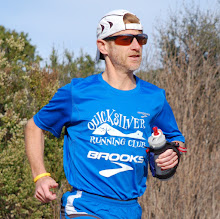While in Libreville, Gabon, you can get to a new country in less than an hour, by plane: 2 islands actually, São Tomé and Principe which, together, form the second smallest country of Africa. Colonized and owned by Portugal, it has been an independent nation for the past 50 years.
Like I did in my first post about Gabon, let's look at a few facts about São Tomé. The country is actually called in Portuguese "São Tomé e Príncipe", formed of 2 distinct islands in the Gulf of Guinea but since my next stop and post will be about Principe, focusing on São Tomé first.
- Geography. Although the country is the second smallest of Africa, after the paradisiac Seychelles, it is a sizable volcanic land, culminating at 2,024 meters (6,640 feet) with the Pico de São Tomé (I wish we had more time to climb it, it's deemed not terribly technical but a long 18-hour hike). The South tip of the island is right on the Equator (to be exact, the locals there can get you on the exact spot on a tiny island, by boat; and sell you a certificate. But since we had crossed the Equators already a handful times while in Gabon, we skipped the sketchy crossing). Not only the country is the second smallest in size, but by its population too: about 200,000, with 95% on São Tomé itself, and mostly in the capital named... São Tomé.
- History. As opposed to many other African countries, it hasn't been colonized technically because the island was uninhabited when the Portuguese discovered it. Yet, later on, it became an awful platform for slave trading. The country actually gain its independence right 50 years ago, on July 1975. We were on Principe on July 12 but were super disappointed by the lack of celebration. We were told that, first, the celebration of that special day actually occurs on each island alternatively every other year and this year was São Tomé's turn. Second, as we'll see in the next post, Principe only holds 5% of the population and its capital is the proud smallest capital in the world. No critical mass to party or launch fireworks...
- Economy. With a tropical climate and more water than they can use, the economy is mostly based on agriculture: some coffee but more importantly the largest exporter of cocoa in the world! Yet, that's about it, no crop otherwise, São Tomé is forced to import mostly everything, a costly proposition. Tourism is developing and the country is clean, people very welcoming, a few great beaches, but facilities remain limited. Overall, the country still depend on foreign aids.
- Weather. As mentioned above, tropical and very humid. Like in Gabon, it was supposed to be the rain season but we barely saw the sun. Unlike California for instance, São Tomé has too much water! Lots and lots of rain forest then.
- Culture. We found the people much more welcoming than in Gabon. They speak Portuguese, with English not a given. Because of the language, and proximity, they watch Brazilian TV which was a surprise to us. Cuisine can be spicy, and we had amazing breakfasts with a variety of fresh fruits especially.
- Infrastructure. First, there is no road circling the whole island. Only 3 roads: the National 1 bordering the North and West coast, National 2 the East and South, and a smaller and shorter road approaching the middle of the island. Most of the island has no road access. Sadly, our flight from Gabon was 7 hours late so we lost the first day (short excursion on National 1 to the picturesque Blue Lagoon, then Nieves) and only had a full day on the island to reach the South. That ride to the South was quite epic as the road quickly transforms in what looks like a mine field, with huge potholes when there is even any asphalt left. It took us almost the whole day to only cover the 150-km round trip: 100 miles, I might have been faster on foot! ;-)
Sources of next 2 screen shots: Satistica and WorldAtlas.
We highly recommend the bed and breakfast we stayed at, called Roça Vale dos Prazeres (Roça means plantation). There are only 3 suites/bungalows, though, so make sure to book early! The owners and hosts, from Portugal, were super accommodating, caring and helpful. More accessible with your own car since it's out of the main city (Santo Amaro). Instagram handle: @rocavaledosprazeres.
Delicious fruits.
Because of our short stay, I only ran once, coming back to our B&B from the East side, on our way back from our visit to the Southern tip of the island. Just 20 kilometers this time, on the main road, through the busy capital, and caught by the end of daylight, which came even earlier than in Gabon, around 6 pm.
Here is the Relive.cc flyover video (click on this link or the picture below).
And a few pictures to get you a flavor of São Tomé. A place we highly recommend visiting, especially from Europe as it is closer and more accessible, flight wise.
PS: after publishing this post, I found another rare account about running in São Tomé, with additional tips, albeit a more urban run: https://the-running-ginger.blog/saotome/
The ATR-72, out of Libreville.
Baobabs!
Southern tip of the main island, with the small island right on the Equator, in the background.
Impressive waves at the Boca do Inferno (literally, Hell Mouth).
Santana church, starting point of my run.
The site of the US Agency for Global Media, which used to relay Voice of America across Africa.
The main plaza in the capital (Praça da Independência).




















No comments:
Post a Comment